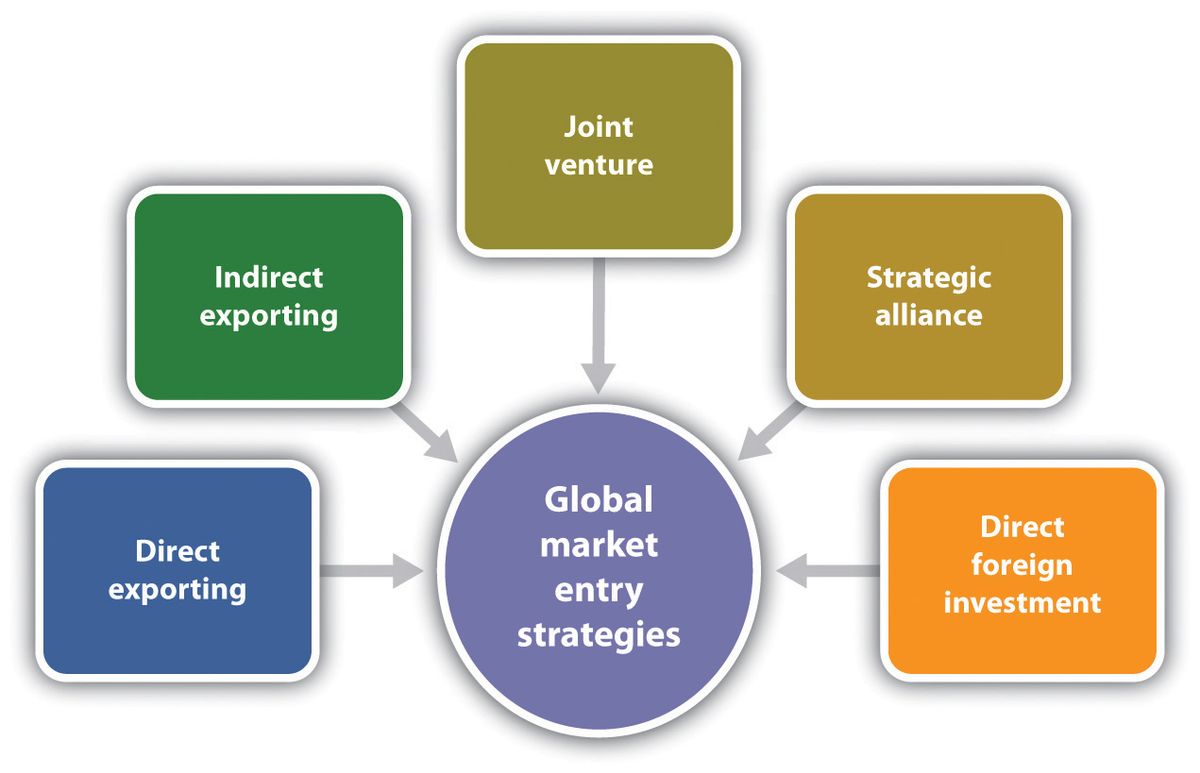Exporting goods to Belgium can be a lucrative venture for USA exporters, but ensuring payment security remains a critical concern. Understanding the Belgian payment landscape, assessing and mitigating risks, and effectively navigating the collection process are essential components of a successful export strategy. This article provides exporters with effective strategies to secure payments from Belgian partners, including insights into the legal framework, cultural considerations, and leveraging professional collection services.
Key Takeaways
- Familiarize with the prevalent payment methods and the legal framework in Belgium to anticipate and prepare for potential payment issues.
- Perform thorough due diligence on Belgian debtors and assess the probability of recovery before initiating business transactions.
- Utilize a phased recovery system, starting with direct contact and progressing to legal action if necessary, to manage delinquent accounts effectively.
- Understand the financial implications of collections, including collection rates and fees, to make informed decisions about legal actions and account management.
- Consider engaging professional collection services that offer competitive rates and are experienced in the nuances of securing payments within Belgium.
Understanding the Belgian Payment Landscape
Overview of Payment Methods in Belgium
Belgium’s payment landscape is diverse, with a mix of traditional and digital methods. Credit cards, bank transfers, and e-wallets are commonly used, reflecting the country’s high internet penetration rate. For US exporters, understanding these preferences is crucial.
Cash remains a staple for smaller transactions, but its use is declining in favor of contactless and mobile payments. Here’s a quick rundown of popular payment methods:
- Credit and debit cards: Dominant in online and in-store purchases.
- Bank transfers: Preferred for B2B transactions.
- E-wallets and mobile apps: Gaining traction among tech-savvy consumers.
- Cash: Still relevant for face-to-face dealings, especially in rural areas.
To secure payments effectively, tailor your approach to match Belgium’s varied payment practices.
US exporters targeting the Belgian market must understand consumer behavior, payment terms, negotiation strategies, and legal frameworks to establish a successful foothold.
Legal Framework Governing Transactions
In Belgium, the legal framework for transactions is a cornerstone for secure trade. Understanding Belgian commercial law and enforcement mechanisms is crucial for timely payments and debt recovery. Exporters must navigate through a complex web of regulations that govern international trade and transactions.
Contractual clarity is paramount. Belgian law requires that contracts be clear, precise, and enforceable. This includes detailed payment terms, delivery schedules, and remedies for non-compliance. Preventative measures such as these are key to safeguarding business interests.
Exporters should ensure that all contractual obligations are unambiguous and enforceable under Belgian law to avoid disputes and facilitate smoother payment processes.
Familiarity with local enforcement options is also essential. In the event of non-payment, exporters have several recourses:
- Amicable settlement attempts
- Mediation or arbitration
- Judicial proceedings
Each option carries its own set of considerations, costs, and timelines. It is advisable to consult with legal experts familiar with Belgian law to determine the most effective course of action.
Cultural Considerations in Payment Practices
When exporting to Belgium, understanding and respecting local payment customs is crucial. Timeliness and communication are highly valued in the Belgian business culture. Exporters should be aware that Belgians often expect clear payment terms and may prefer electronic transfers or direct debits.
- Educate Belgian clients on your payment terms to ensure clarity.
- Establish a rapport to facilitate smoother transactions.
- Be proactive in addressing any payment issues that arise.
US tech firms can proactively address cultural differences in payment practices in the Belgian market by educating clients on payment terms and processes to avoid delays and misunderstandings.
Adapting to these practices not only shows respect for your Belgian counterparts but can also lead to more secure and predictable payments.
Assessing and Mitigating Risks
Conducting Due Diligence on Belgian Debtors
Before engaging in the collection process, due diligence is paramount. Scrutinize the debtor’s financial health and payment history to gauge the likelihood of successful recovery. Employ a systematic approach:
- Review credit reports and financial statements.
- Analyze past payment behaviors and patterns.
- Investigate the debtor’s assets and liabilities.
Consider the context of each case. A debtor’s current economic situation can significantly impact their ability to pay. If the probability of recovery seems low, it may be more prudent to close the case, avoiding unnecessary expenses.
When the facts suggest a reasonable chance of recovery, weigh the costs of litigation against the potential benefits. Remember, upfront legal costs can range from $600 to $700, depending on jurisdiction.
Ultimately, the decision to pursue legal action or continue with standard collection activities rests with the exporter. Be mindful of the collection rates, as they vary based on the age and size of the account, and the number of claims.
Evaluating the Probability of Recovery
When venturing into the Belgian market, exporters face payment risks due to factors like contractual ambiguities and economic instability. It’s essential to assess the debtor’s financial health, as this is a pivotal element in determining the likelihood of successful recovery.
Recovery probability is not a matter of chance; it involves a systematic approach:
- Reviewing the debtor’s payment history and creditworthiness.
- Analyzing the debtor’s current financial status and assets.
- Considering the economic climate and industry trends.
The decision to pursue legal action hinges on a clear understanding of these factors. If the probability of recovery is low, it may be more prudent to cease efforts and close the case, avoiding further expenses.
However, if the assessment indicates a reasonable chance of success, the next steps involve preparing for potential litigation, understanding the associated costs, and strategizing for maximum recovery. This phase is critical for exporters to make informed decisions on whether to proceed with legal action or continue with standard collection activities.
Strategies for Risk Management
To safeguard against non-payment, diversify your payment options. Offer a mix of advance payments, letters of credit, and open account terms to balance risk and competitiveness. Utilize credit insurance to protect against debtor default.
Establish clear credit policies and adhere to them strictly. Regularly review debtor creditworthiness to anticipate potential issues.
Consider the following risk management strategies:
- Require partial advance payment to commit Belgian buyers.
- Use documentary collections to maintain control over goods until payment.
- Negotiate retention of title clauses in your contracts.
Remember, a proactive approach to risk management can significantly reduce the likelihood of payment defaults and strengthen your financial position in the Belgian market.
Navigating the Collection Process
Phase One: Initial Contact and Skip Tracing
Upon initiating the recovery process, swift action is paramount. Within 24 hours of account placement, a multi-channel communication strategy is deployed. Debtors receive the first of four letters, while exporters engage in skip tracing to pinpoint the most current financial and contact information.
- The first letter is dispatched via US Mail.
- Comprehensive skip tracing is conducted to update debtor data.
- Daily attempts to contact the debtor are made through calls, emails, and texts.
Persistence is key during this phase. Continuous efforts over the first 30 to 60 days can lead to a resolution without further escalation.
If these efforts do not yield payment, the case advances to Phase Two, where legal expertise comes into play. The focus remains on securing Belgian payments efficiently, navigating the complexities of the 3-phase Recovery System.
Phase Two: Legal Escalation and Attorney Involvement
When legal escalation becomes necessary, USA exporters must navigate the Belgian legal system with precision. Upon transferring your case to a local attorney, expect a swift series of actions:
- The attorney drafts and sends demand letters to the debtor.
- Concurrently, attempts to contact the debtor via phone intensify.
- If these efforts fail, a detailed report outlines the next steps.
Deciding to litigate? Be prepared for upfront costs, including court and filing fees, typically ranging from $600 to $700.
Remember, the decision to proceed with litigation or to continue with standard collection activities rests solely with you. The article provides insights on ensuring timely payments from Belgian clients for exported services, covering the legal framework, recovery systems, and financial considerations for payment collection challenges with guidance on decision-making.
Phase Three: Litigation and Recovery Recommendations
When the collection process escalates to litigation, exporters face a critical decision. Choose wisely between legal action and alternative recovery methods. If the debtor’s assets and case facts suggest low recovery chances, discontinuing may be prudent. Conversely, opting for litigation incurs upfront costs, typically $600-$700, for court and filing fees.
Our fee structure is straightforward:
- For 1-9 claims, rates vary from 30% to 50% of the amount collected, depending on the account’s age and value.
- For 10 or more claims, the rates decrease slightly, reflecting our commitment to volume submissions.
Remember, if litigation does not result in recovery, you owe nothing further. This no-recovery, no-fee approach aligns our interests with yours, ensuring we pursue only the most promising cases.
In the context of the Belgian automotive industry, these strategies are particularly relevant. Navigating international trade agreements and regulations adds complexity to the recovery process, underscoring the importance of a meticulous approach to litigation and recovery.
Financial Considerations for Exporters
Understanding Collection Rates and Fees
Securing timely payments from Belgian clients is crucial for USA exporters, especially in industries like cosmetics where transactions are frequent and volumes are high. Understanding the fee structure for collections is essential to manage the financial impact of the recovery process. Exporters should be aware that collection agencies typically charge a percentage of the amount collected, with rates varying based on factors such as the age of the account and the total number of claims.
For instance, accounts under one year may incur a 30% fee, while older accounts could be charged up to 50%. It’s important to note that legal actions involve additional costs, including court and filing fees, which can range from $600 to $700. These fees are required upfront if litigation is pursued. However, if the collection efforts through litigation fail, the exporter does not owe any additional fees to the collection firm or attorney.
Exporters must weigh the potential recovery against the costs involved to determine the most economically viable approach.
Here’s a quick breakdown of typical collection rates:
- Accounts under 1 year: 30% (27% for 10+ claims)
- Accounts over 1 year: 40% (35% for 10+ claims)
- Accounts under $1000: 50% (40% for 10+ claims)
- Accounts requiring attorney involvement: 50%
These rates are competitive and tailored to the volume of claims, providing an incentive for exporters to consolidate their collection efforts.
Analyzing Cost-Benefit of Legal Action
When considering legal action to secure payments from Belgian debtors, US exporters must weigh the potential recovery against the associated costs. Effective communication and negotiation are pivotal in aligning payment terms and minimizing the need for litigation. Upfront legal costs, such as court fees and attorney charges, can range from $600 to $700, depending on the jurisdiction. These costs must be paid in advance, with no guarantee of recovery.
Costs vs. Recovery:
-
Upfront legal costs: $600 – $700
-
Collection rates (1-9 claims):
- Under 1 year: 30%
- Over 1 year: 40%
- Under $1000: 50%
- With attorney: 50%
-
Collection rates (10+ claims):
- Under 1 year: 27%
- Over 1 year: 35%
- Under $1000: 40%
- With attorney: 50%
Exporters must also consider the age of the account and the amount owed. Older accounts and those under $1000 incur higher collection rates, potentially eroding the profitability of the recovery process. Deciding not to proceed with legal action allows for the withdrawal of the claim without owing fees, or the continuation of standard collection activities.
The decision to litigate should be based on a thorough risk assessment, credit checks, and the evaluation of export credit insurance to mitigate overdue payments.
Managing Small Claims and Aged Accounts
When dealing with small claims or accounts that have aged beyond a year, exporters must navigate a delicate balance between persistence and cost-effectiveness. Prioritize accounts with higher recovery potential to maximize returns. For aged accounts, consider the diminishing likelihood of recovery against the escalating costs of pursuit.
Economic instability, contractual discrepancies, and communication gaps can significantly impact the success rate of securing payments. Addressing these challenges is crucial for exporters to secure Belgian payments and navigate international trade laws effectively.
Exporters should be aware of the collection rates that apply to different categories of claims. Here’s a simplified breakdown:
- Accounts under 1 year: 30% (1-9 claims) or 27% (10+ claims)
- Accounts over 1 year: 40% (1-9 claims) or 35% (10+ claims)
- Small claims under $1000: 50% regardless of age or quantity
Deciding whether to pursue legal action for small claims requires a careful analysis of potential gains versus the upfront legal costs and fees. Remember, litigation is not always the most viable option.
Leveraging Professional Collection Services
Selecting a Competent Collection Agency
Choosing the right collection agency is pivotal for securing Belgian payments. Look for agencies with a proven track record in international debt recovery and a deep understanding of the Belgian legal system.
Expertise in local customs and a robust network of attorneys are essential. Agencies should offer transparent pricing structures and clear communication channels.
- Evaluate their success rates and client testimonials.
- Confirm their adherence to ethical collection practices.
- Assess their technological capabilities for efficient debt recovery.
Ensure the agency aligns with your business values and export strategies.
Remember, a competent agency not only recovers debts but also preserves your business relationships.
The Role of Attorneys in Securing Payments
In the quest to secure payments from Belgian debtors, the involvement of attorneys can be pivotal. Attorneys bring legal leverage, transforming a standard collection effort into a more formal and pressing demand for payment. Their presence signifies a shift towards serious legal consequences for non-payment, which can prompt a debtor to settle the debt more promptly.
Litigation is a tool used as a last resort, but the threat alone can be a powerful motivator. When an attorney steps in, the debtor is faced with the reality of legal action, which may include additional costs and the potential for public judgment records.
- Initial attorney actions include drafting demand letters on law firm letterhead.
- Follow-up involves persistent contact attempts, combining letters with calls and emails.
- If necessary, attorneys will escalate to filing a lawsuit, representing the creditor’s interests in court.
The decision to engage in litigation is significant, requiring a careful cost-benefit analysis by the exporter. Upfront legal costs must be weighed against the likelihood of recovery and the amount at stake.
Ultimately, the choice to utilize attorneys in the collection process is a strategic one, balancing the potential for faster payment against the costs and risks of legal proceedings.
Continued Pursuit of Debtors: Calls, Emails, and Faxes
Persistence is key in the collection process. Regular communication with debtors is crucial to securing payments. Our approach involves daily attempts to reach out during the initial phase, maintaining pressure and presence in the debtor’s awareness.
The goal is to achieve a resolution before legal escalation becomes necessary.
If standard collection activities do not yield results, we transition to more formal measures. Here’s a breakdown of our collection rates based on the age and amount of the account:
- Accounts under 1 year: 30% (1-9 claims) or 27% (10+ claims) of the amount collected.
- Accounts over 1 year: 40% (1-9 claims) or 35% (10+ claims) of the amount collected.
- Accounts under $1000.00: 50% of the amount collected.
- Accounts placed with an attorney: 50% of the amount collected.
These rates ensure that our interests are aligned with yours, incentivizing us to maximize recovery. Should litigation be necessary, we provide detailed recommendations based on an assessment of the debtor’s assets and the likelihood of recovery.
At Debt Collectors International, we understand the importance of maintaining a healthy cash flow for your business. Our expert collectors are ready to serve you with over 30 years of commercial collection experience, offering specialized solutions across all industries. Don’t let unpaid debts disrupt your business operations. Visit our website to learn more about our no recovery, no fee services, and take the first step towards recovering what is rightfully yours. Get a free rate quote today and start leveraging professional collection services to secure your financial stability.
Frequently Asked Questions
What are the typical upfront legal costs for filing a lawsuit in Belgium?
Upfront legal costs such as court costs and filing fees typically range from $600.00 to $700.00, depending on the debtor’s jurisdiction in Belgium.
What happens if the litigation attempts to collect a debt fail?
If attempts to collect via litigation fail, the case will be closed, and you will owe nothing to the collection firm or the affiliated attorney.
How does the collection rate differ based on the number of claims submitted?
For 1-9 claims, rates vary from 30% to 50% of the amount collected, depending on the age and amount of the account. For 10 or more claims, the rates range from 27% to 50%.
What actions are taken within the first 24 hours of placing an account for collection?
Within the first 24 hours, a letter is sent to the debtor, skip tracing and investigation are conducted, and attempts to contact the debtor via phone, email, and other means are initiated.
What can I expect during Phase Two of the Recovery System?
In Phase Two, the case is forwarded to a local attorney who will draft demand letters and attempt to contact the debtor. If these attempts fail, a recommendation for the next step is provided.
What are my options if the possibility of recovery is deemed unlikely after an investigation?
If recovery is unlikely, you can choose to close the case without owing anything, or allow the collection firm to continue pursuing the debtor with standard collection activities.





